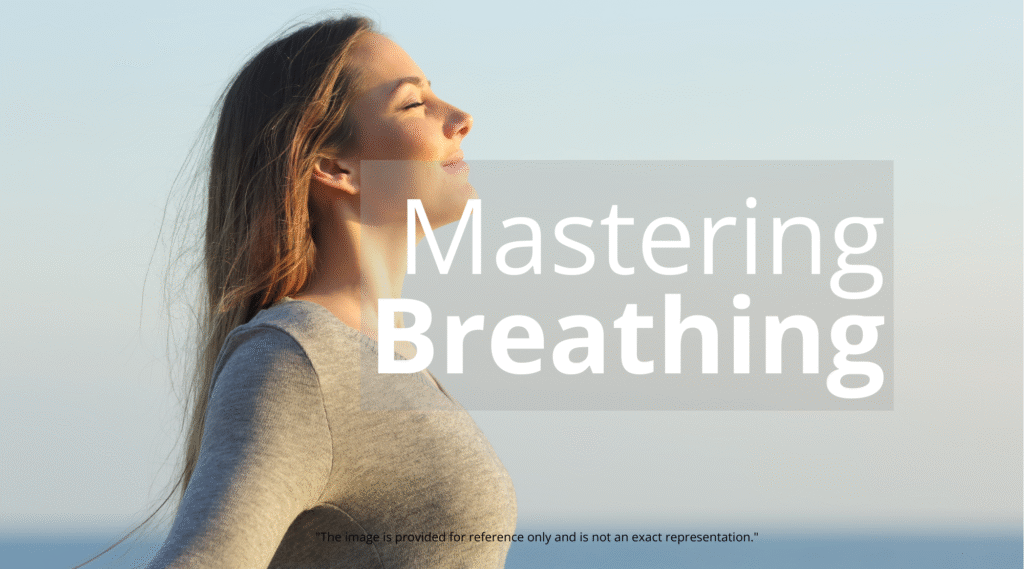Unveiling the Power of Breath: Techniques for Enhanced Well-being
Are you constantly searching for ways to improve your health and overall well-being? Often overlooked, the simple act of breathing holds a profound power that can significantly impact your physical and mental state. This article delves into the transformative potential of conscious breathing, exploring various techniques to help you tap into its incredible benefits. From stress reduction to improved athletic performance, discover how mastering your breath can unlock a new level of vitality.

The Science of Breathing: A Deep Dive
The foundation of all breathing techniques lies in understanding the fundamental principles of respiration. Breathing isn’t just about taking in oxygen and expelling carbon dioxide; it’s a complex physiological process that directly influences the nervous system, cardiovascular system, and even your emotional state.
The diaphragm, a large muscle located at the base of your lungs, plays a crucial role in breathing. When you inhale, the diaphragm contracts and moves downward, creating space for the lungs to expand and fill with air. When you exhale, the diaphragm relaxes, and the lungs naturally deflate.
Furthermore, the nervous system also plays a key role. The autonomic nervous system (ANS) has two primary branches: the sympathetic nervous system (SNS) and the parasympathetic nervous system (PNS). SNS is responsible for the “fight or flight” response, triggering increased heart rate, rapid breathing, and heightened alertness. The PNS, on the other hand, is associated with the “rest and digest” response, promoting relaxation, slower breathing, and a state of calm. Specific breathing techniques can directly stimulate the PNS, leading to a sense of tranquility and well-being.
Benefits of Breathing Techniques: A Comprehensive Overview
Regularly practicing conscious breathing techniques can lead to a wide array of health benefits. These benefits span both physical and mental realms, impacting your overall quality of life.
- Stress Reduction and Anxiety Relief:
Many breathing techniques, like diaphragmatic breathing (also known as belly breathing) and box breathing, are proven to activate the parasympathetic nervous system. This can help reduce cortisol levels (the stress hormone) and calm the mind, offering relief from anxiety and promoting a sense of relaxation. Consider the benefits of weighted blankets for anxiety relief, and how breathing techniques can compliment this. - Improved Sleep Quality:
Breathing exercises before bed can help relax the body and mind, making it easier to fall asleep and stay asleep. Deep breathing slows down the heart rate and lowers blood pressure, creating an environment conducive to restful sleep. - Enhanced Physical Performance:
Athletes have long utilized breathing techniques to optimize their performance. Proper breathing can improve oxygen efficiency, increase lung capacity, and reduce the perception of exertion during workouts. For those looking to get the most from their workouts, consider reading our article on Sprint Training: Unleash Peak Fitness in Minutes for a Healthier You. - Increased Mental Clarity and Focus:
Breathing exercises can boost blood flow to the brain, improving focus, concentration, and cognitive function. Specific techniques, like the alternate nostril breathing, are believed to balance the hemispheres of the brain, leading to greater mental clarity. 40 minutes of exercise have also been known to boost brain health. Read our article 40 Minutes of Exercise: The Secret to Boosting Brain Health & Memory (Backed by Science). - Better Emotional Regulation:
Breathing techniques provide tools for managing emotions. By consciously controlling your breath, you can develop greater awareness of your emotional state and learn to respond to triggers in a more measured and composed manner.
Mastering the Techniques: A Practical Guide
Let’s explore some simple yet powerful breathing techniques you can incorporate into your daily routine. Each of these techniques offers unique benefits and can be tailored to your individual needs.
Diaphragmatic Breathing (Belly Breathing)
This is one of the most fundamental and accessible techniques.
- Find a comfortable position: You can sit or lie down. Place one hand on your chest and the other on your belly.
- Inhale deeply through your nose: Focus on filling your belly with air. Your belly should rise, while your chest remains relatively still.
- Exhale slowly through your mouth: Let the air gently flow out of your belly. Your belly should fall.
- Repeat: Continue for 5-10 minutes, focusing on the rise and fall of your belly.
Box Breathing (Square Breathing)
This technique is excellent for stress reduction and promoting focus.
- Inhale for a count of four: Slowly breathe in through your nose, visualizing the air filling your lungs.
- Hold your breath for a count of four: Retain the air in your lungs.
- Exhale for a count of four: Slowly release the air through your mouth.
- Hold your breath for a count of four: Pause after exhaling.
- Repeat: Continue this cycle for several minutes.
Pursed-Lip Breathing
This technique is particularly helpful for people with lung conditions.
- Inhale slowly through your nose.
- Pucker your lips as if you are going to whistle.
- Exhale slowly and gently through your pursed lips, taking twice as long to exhale as you did to inhale.
Alternate Nostril Breathing (Nadi Shodhana)
This technique is believed to balance the energy channels in the body.
- Sit comfortably. Close your right nostril with your right thumb.
- Inhale deeply through your left nostril.
- Close your left nostril with your right ring finger and release your thumb.
- Exhale slowly through your right nostril.
- Inhale through your right nostril.
- Close your right nostril and release your left nostril.
- Exhale through your left nostril.
- Repeat: Continue this cycle for several rounds.
Integrating Breathwork into Your Daily Life
The beauty of breathing techniques lies in their accessibility. They can be practiced anywhere, anytime, and require no special equipment or training. Here are some tips for integrating breathwork into your daily life:
- Start small: Begin with just a few minutes of practice each day and gradually increase the duration as you become more comfortable.
- Set reminders: Schedule specific times for breathwork, such as before bed, during your commute, or when you feel stressed.
- Find a quiet space: Choose a peaceful environment where you can relax and focus on your breath without distractions.
- Be patient: It may take time to feel the full benefits of breathwork. Be consistent with your practice and don’t get discouraged if you don’t see immediate results.
- Listen to your body: If you feel lightheaded or uncomfortable at any time, stop the exercise and rest.
Breathing and Holistic Well-being
Breathing is an essential component of a holistic approach to well-being. It harmonizes effortlessly with other health-promoting practices. Pairing breathing exercises with practices like yoga can boost spinal mobility. Read our article: Boost Spinal Mobility: 3 Yoga Poses for Flexibility and Health.
Furthermore, incorporating breathing exercises into your routine can compliment other lifestyle modifications. For example, if you are trying to improve your physical fitness, breathwork can assist with better oxygen efficiency and reduced perception of exertion. Those seeking to manage their blood pressure, breathwork can provide relaxation, while also adopting the recommendations from: 2025 AHA Blood Pressure Guidelines: New Recommendations for Optimal Health.
Overcoming Challenges and Seeking Support
While breathing techniques are generally safe, it is important to be aware of potential challenges and to seek support when needed.
- Hyperventilation: Rapid, shallow breathing can lead to lightheadedness or dizziness. If this happens, stop the exercise and rest.
- Underlying Health Conditions: If you have any underlying health conditions, such as asthma or heart disease, consult with your doctor before starting a new breathing practice.
- Seek guidance: Consider working with a qualified yoga instructor or breathwork specialist. They can provide personalized guidance and help you develop a safe and effective practice.
The Power of Breath in Summary
In conclusion, breathing techniques offer a powerful and accessible pathway to enhancing your health and well-being. By consciously controlling your breath, you can reduce stress, improve sleep, enhance physical performance, and cultivate a greater sense of mental clarity and emotional balance. Start incorporating these simple techniques into your daily routine and experience the transformative power of breath. The journey to a healthier and more balanced you begins with your next














1 comment